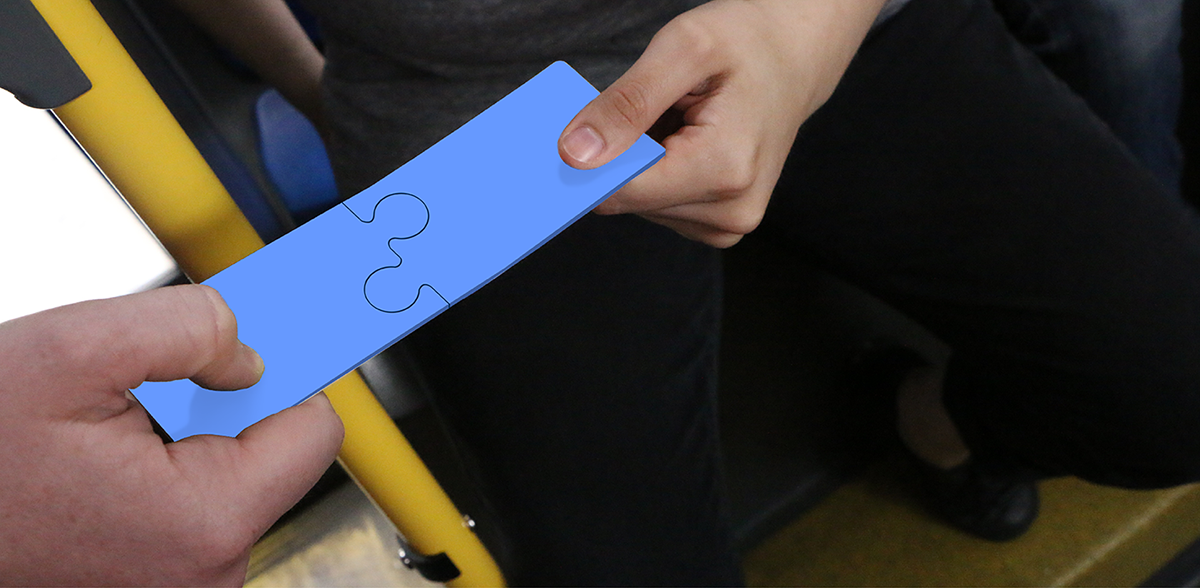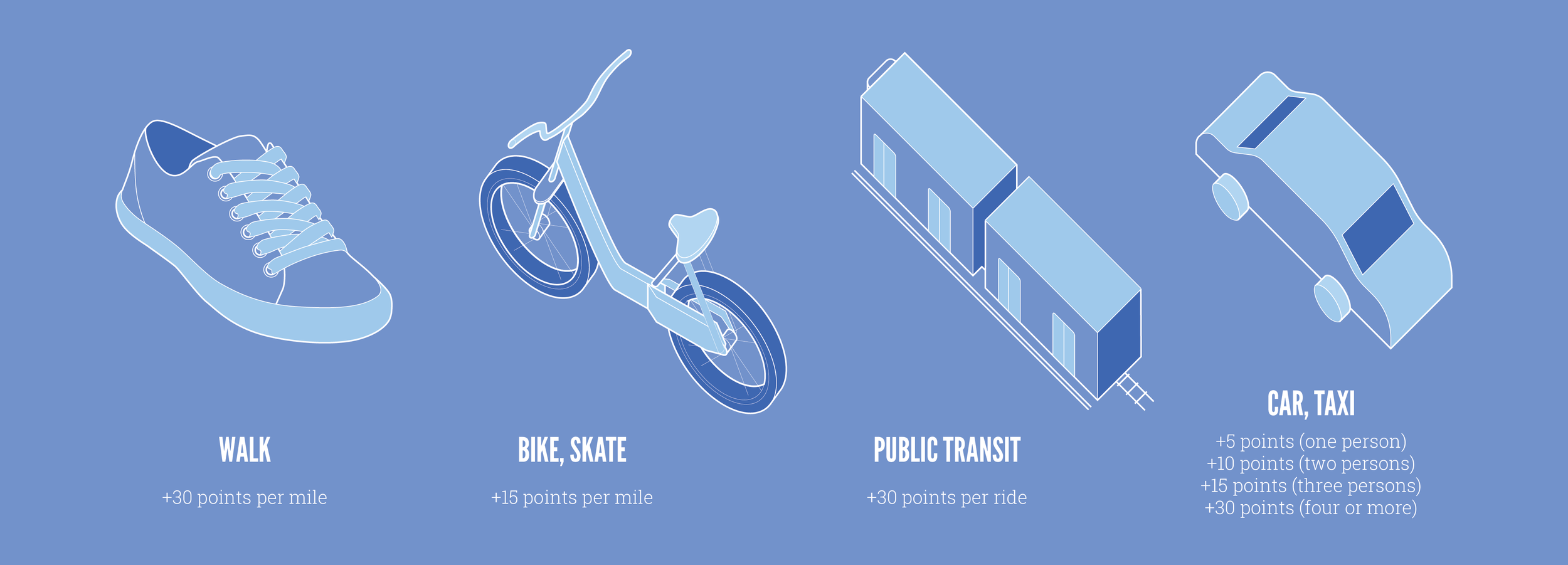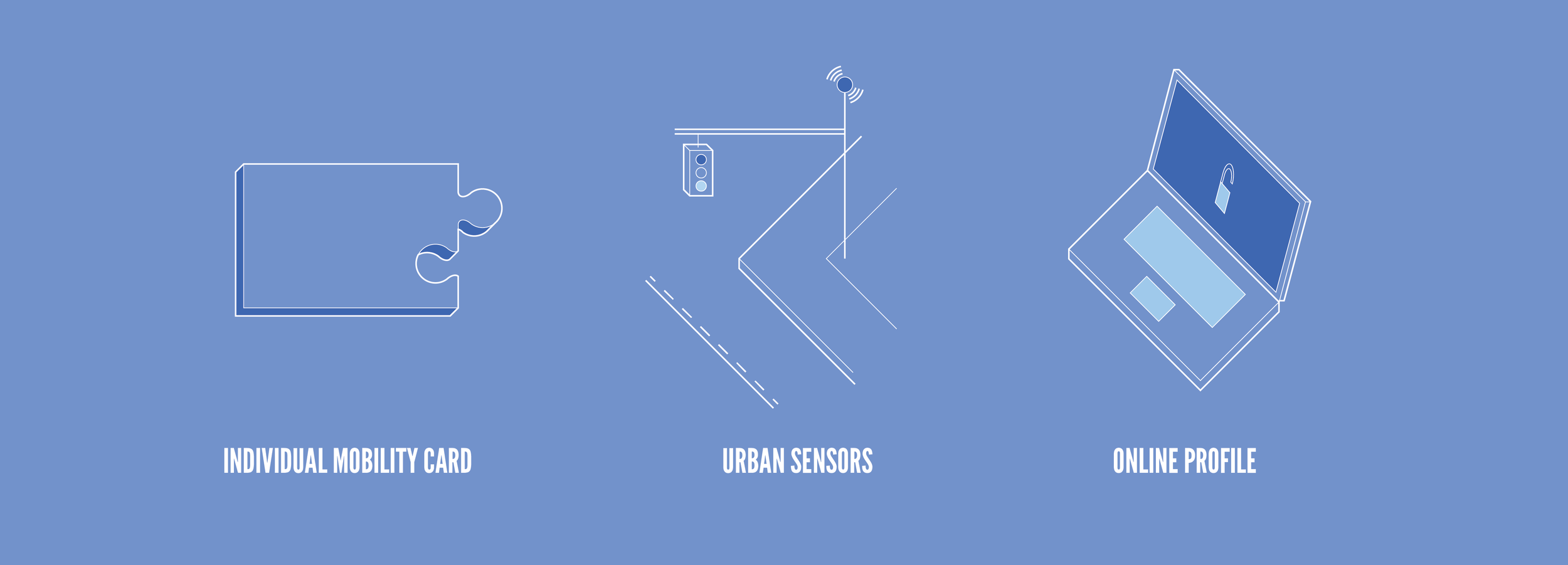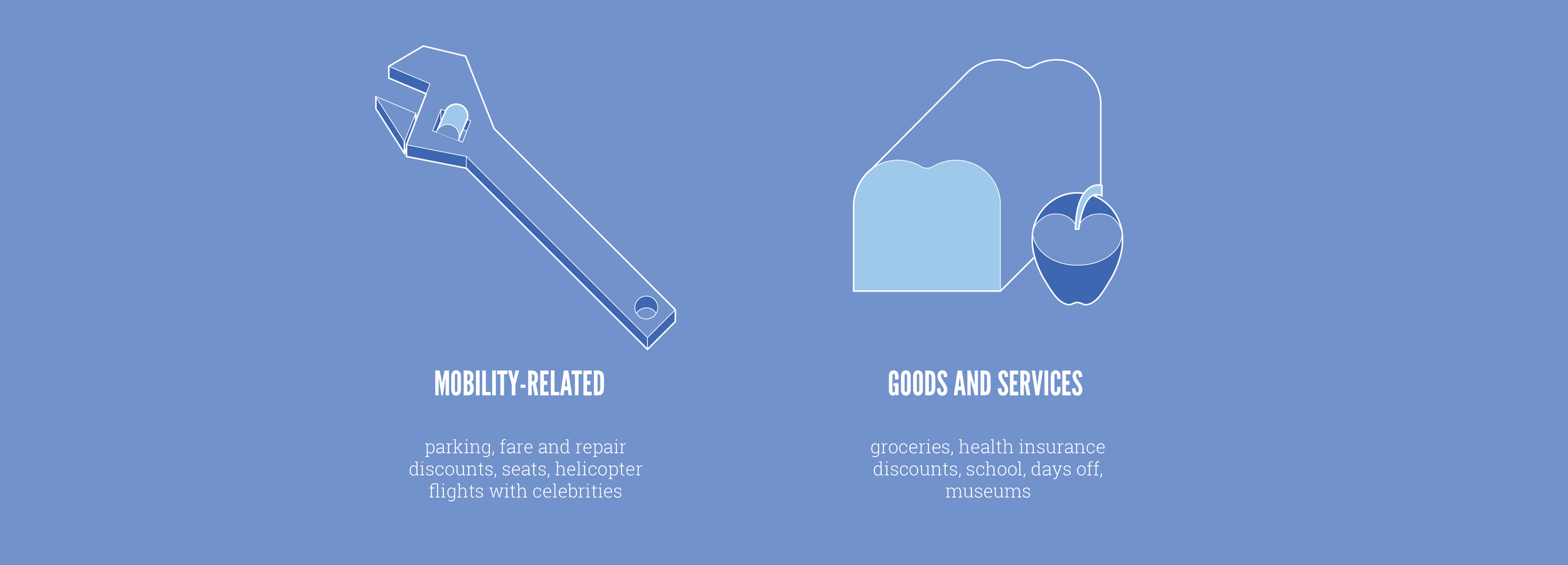
The project challenges current perspectives on mobility by reframing it as a game. The aim is to change current hierarchies in the transportation system by privileging mobility restricted groups, rewarding collective group behaviors and encouraging active lifestyles. By gameifying urban transit, not only could gridlock be reduced and the environment less harmed, but data from daily movements could inform decision making and public policy.
The goal of the project is to shift the incentive of using transportation from convenience to added social benefit. This system is meant to convert single occupancy modes of transportation to collective transport in order to lessen the strain on urban and natural resources.
Blue Challenge is a reward system that uses points as currency. People gain points depending on modes of transport used and distances traveled –- the individual motorized vehicles being the least rewarded. There are also special missions and mini-games proposed during collective transport journeys for added benefits.

Blue Challenge works through an ubiquitous cloud connected network comprised of a website, sensor-equipped urban furniture, and Blue cards (individual integrated mobility cards) used to access all modes of transport.

Points are exchanged for a range of rewards that vary from free parking spots to discounted health insurance.

There are three user statuses – cyan, royal and indigo – each one with unique criteria and privileges. Users change their status by engaging in challenges proposed by the system, usually related to the exploration of different areas and modes of transport within the city. As users rise in status, they unlock various privileges.
Cyan is the default status for beginners. No special privileges are granted until users start acquiring points. They are subject to following the challenges set by the Indigo level.
Royal is a combination of active players and mobility-restricted groups such as the elderly and disabled. These users unlock privileges such as lengthening traffic light duration and enabling group rewards.
Indigo is for the most advanced users. Due to their high level of interaction, they are granted the autonomy to design the challenges for the system.
Blue Challenge is managed and developed by users, and the autonomy of the system self-regulates to emphasize the strength of collective action. For further insight into this design speculation, check out this comprehensive pdf and watch the animated film below.
How could a car company prioritize access over mobility?
What happens when access becomes a commodity in itself?
What’s the cost benefit analysis of access services vs. car ownership?